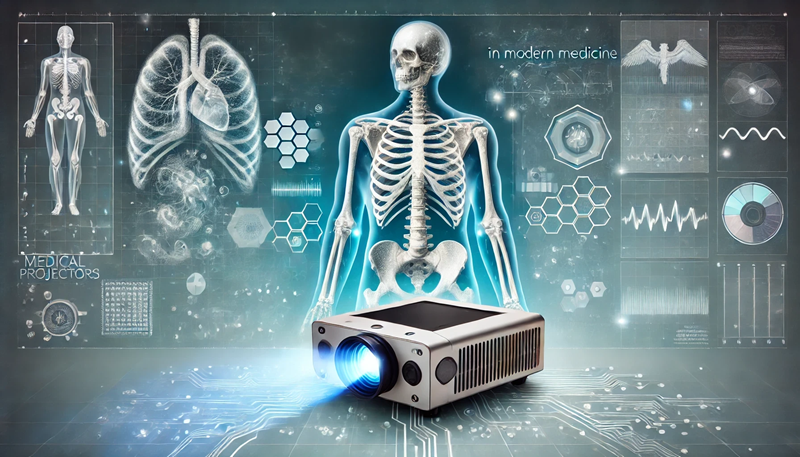The integration of advanced technology in healthcare has revolutionized the way medical professionals diagnose, treat, and educate. Among these advancements, medical projectors have emerged as indispensable tools, offering high-resolution imaging and interactive capabilities. From enhancing surgical precision to transforming medical education, the top uses of medical projectors in modern medicine highlight their significant role in shaping the future of healthcare.
Why Medical Projectors Are Crucial in Modern Medicine
Medical projectors are designed to provide high-quality visualizations, enabling healthcare professionals to access critical information in real-time. Their ability to display detailed medical imaging and support collaborative environments makes them essential in modern healthcare facilities.
Key Benefits of Medical Projectors in Healthcare:
- High-resolution displays for accurate diagnostics.
- Integration with AR/VR for enhanced visualization.
- Portability and ease of use in diverse medical settings.
Top Uses of Medical Projectors in Modern Medicine
1. Enhancing Surgical Precision with High-Resolution Imaging
Medical projectors play a pivotal role in surgeries by providing surgeons with real-time, high-definition visuals of the surgical site. These projectors, often integrated with AR technology, help improve accuracy and outcomes.
Applications:
- Laparoscopic Surgery: Displaying magnified visuals of internal organs.
- Neurosurgery: Mapping brain structures with precise imaging.
- Robotic Surgery: Assisting in visualizing surgical procedures remotely.
Key Feature:
4K and 8K resolution projectors offer unparalleled clarity, enabling surgeons to make informed decisions during complex procedures.
2. Transforming Medical Education with Interactive Learning
Medical projectors have revolutionized the way medical students and professionals learn and train. By providing interactive and immersive experiences, these devices ensure that complex concepts are easier to understand.
Examples of Use in Education:
- 3D Anatomy Visualization: Projecting lifelike 3D models of human anatomy for in-depth study.
- Simulation Training: Using AR-enabled projectors to replicate surgical scenarios.
- Lecture Support: High-quality visuals for teaching complex topics in classrooms or online.
Benefit:
Interactive learning helps bridge the gap between theoretical knowledge and practical application, making training more effective.
3. Improving Patient Communication and Understanding
Medical projectors are invaluable for patient consultations. Doctors can use projectors to visually explain medical conditions, treatment plans, or surgical procedures, improving patient understanding and engagement.
Common Applications:
- Projecting MRI or X-ray images to explain diagnoses.
- Demonstrating surgical procedures with video guides.
- Using AR-enhanced visuals to showcase the effects of treatments.
Impact:
Better patient communication leads to increased trust and compliance with treatment plans.
4. Supporting Diagnostics with Advanced Imaging
In diagnostic settings, medical projectors are used to display large-scale, detailed imaging results. This is especially useful in radiology and pathology, where accurate visuals are critical for identifying issues.
Diagnostic Tools Enhanced by Projectors:
- Radiology Imaging: Displaying X-rays, CT scans, and MRIs.
- Pathology Slides: Projecting microscope images for better analysis.
- Real-Time Monitoring: Displaying live vitals or imaging during procedures.
Benefit:
Enhanced visualization ensures accurate diagnostics, reducing the margin for error.
5. Facilitating Remote and Telemedicine Applications
With the rise of telemedicine, medical projectors have become essential in remote healthcare delivery. Their ability to provide high-quality visuals ensures effective collaboration between healthcare providers and patients.
Key Uses in Telemedicine:
- Projecting patient data during virtual consultations.
- Enhancing communication between specialists in different locations.
- Supporting virtual surgical planning with AR-integrated projectors.
Advantage:
Telemedicine projectors bridge the gap between distance and care, ensuring patients receive timely and accurate healthcare.
Innovations in Medical Projector Technology
1. Augmented Reality Integration
AR-enabled projectors overlay digital information onto real-world visuals, creating a more immersive experience for surgeries, diagnostics, and training.
2. Compact and Portable Designs
Lightweight projectors with battery-powered options make it easier to deploy them in rural or emergency settings.
3. AI-Driven Enhancements
AI-powered projectors optimize image quality, automate adjustments, and provide predictive analytics for better decision-making.
Challenges in Adopting Medical Projectors
While the benefits are immense, adopting medical projectors comes with challenges:
- Cost: High-end medical projectors can be expensive, limiting accessibility.
- Training Requirements: Medical staff must be trained to effectively use these advanced devices.
- Infrastructure Needs: High-quality projectors require robust infrastructure, including compatible imaging systems.
Future Prospects of Medical Projectors in Healthcare
The future of medical projectors is promising, with advancements in AI, AR, and holography expected to redefine their capabilities. Emerging trends include:
- Holographic Projectors: Creating 3D holograms for surgeries and training.
- 5G Integration: Enabling real-time, high-resolution visuals for remote diagnostics.
- Sustainability Initiatives: Eco-friendly projectors with lower energy consumption.
Conclusion: Shaping the Future of Healthcare Visualization
Medical projectors are no longer just tools—they are transforming the way healthcare is delivered, learned, and experienced. From surgical precision to patient engagement, the top uses of medical projectors in modern medicine highlight their potential to improve outcomes and revolutionize the healthcare industry.
